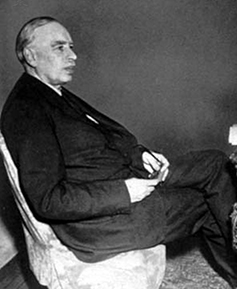4.2 Equity as opportunism: creating the ‘right place and the right time’
Key to understanding equity’s role and place vis-à-vis laissez-faire capitalism relates to forms of individualism that manifested not only in equity’s supposed ties to justice, but more importantly in its ability to create individually tailored property rights. In particular, it was mechanisms for creating property rights and generally administrating and managing property in ways that guaranteed benefit that were too tantalising a prospect to overlook for stakeholders.
As maintained earlier, it is largely as a consequence of the trust that equity ought to be considered the capitalist’s juridical tool par excellence. Again, in stark contrast to its philosophical and idealised utopian foundations, equity, and in particular those that rely upon it to manage property within the capitalist free-market context, have demonstrated that the trust is more than capable of circumventing equitable concerns for fairness or justice, equality or egalitarianism. More precisely, by association with the trust, equity has allowed individuals to circumvent what is just and fair to society as a whole in terms of how wealth is (re)distributed via the tax system. In accordance with the rules of equity, trusts provide a means for, for example, opportunistic individuals or companies to make the rules work in their favour to reduce their tax liability and thus diminish an important mode of social welfare provision. Of course, by definition this type of tax avoidance is perfectly legal as it adheres to the rule of law. The question is, is it just and fair for individuals and companies to be able to exploit complex financial arrangements in order to avoid paying into a tax system that they may ultimately benefit from, and which others are unable to avoid?
Charitable trusts that facilitate tax avoidance – the extreme end of what Garton (2015) refers to as the ‘privileges’ of charitable status – and do so with little evidence of any necessary attendant public benefit, are a prime example of this type of circumvention. Further, it may be considered one of the more insidious methods of tax avoidance if exploited unjustly because of the general expectation that charity is a force for social good. This abuse of charity is, as Thomas Piketty argues, just one of the ways that confirms the idea ‘that there is a certain porosity between public and private uses of these legal entities’ (2014, p. 452), and thus something capable of contributing to growing social inequality, rather than being a remedy for it. While some individuals or companies may deliberately abuse or exploit the fiscal privileges of charitable status for their own ends, there has nevertheless long been a question-mark over whether charities should enjoy such privileges at all. These include, for example, the dissenting judgements of Lord Halsbury LC and Lord Bramwell in Commissioners for Special Purposes of Income Tax v Pemsel [1891–94] All ER Rep 28 and, more recently, Lord Cross in Dingle v Turner [1972] AC 601. Lord Cross stated that:
[T]he courts – as I see it – cannot avoid having regard to the fiscal privileges accorded to charities […]. Charities automatically enjoy fiscal privileges which with the increased burden of taxation have become more and more important and in deciding that such and such a trust is a charitable trust the court is endowing it with a substantial annual subsidy at the expense of the taxpayer.
While somewhat damning, it is nevertheless reasonable to claim that under the influence and authority of capitalism equity has stretched and expanded the definition of what is fair as much as it once stretched and expanded the concept of property rights. It has helped the wealthy both create and maintain the very conditions required to facilitate greater wealth. The consequence of this has been growing inequality throughout the twentieth and twenty-first centuries. But it has also led to spurious forms of aspiration held largely by a debt-ridden majority who can only hope of one day becoming wealthy; a hope that has ultimately led to individuals increasingly relying on credit to support their aspirations. Equity has, in stark contrast to the discussion earlier, therefore become a facilitator of ‘legal’ opportunism. Keynes claimed:
Profit accrues to the individual who, whether by skill or good fortune, is found with his productive resources in the right place at the right time. A system which allows the skilful or fortunate individual to reap the whole fruits of this conjuncture evidently offers an immense incentive to the practice of the art of being in the right place at the right time.
Keynes was not referring to trusts or equity specifically in this quote, but the system to which he refers is one which includes the legal and ‘equitable’ mechanisms discussed.

In her discussion of equity’s relationship to property, Sarah Worthington outlines ways in which the rules and doctrines of equity have ultimately proved capable of satisfying the demands of capitalism on this basis, and allowed wealthy individuals to ensure that they are ‘in the right place at the right time’:
Equity ‘created’ new forms of property by changing the boundaries between personal rights and proprietary rights. It did this by contradicting the Common Law and permitting certain ‘personal’ rights to be transferred to third parties. These limited personal rights were thereby converted into transferable, usable wealth. The legal regime – and the social and economic regime – immediately became more sophisticated. Of course, these new forms of property needed legal protection, and so there was pressure on the legal system to evolve still further to deliver this protection.
In the twenty-first century equity continues to facilitate all manner of profitable property dealings via the rules and doctrines that have been developed meticulously over many centuries, therefore leaving the door open to opportunism. This includes a number of the financial products and strategies that led to or were a central feature of the 2008 financial crisis. So-called ‘securitisation’, for example, involves ‘the provision of cash in exchange for a right to a future income stream from assets’ (Garton, 2015, p. 456). In essence securitisation involves taking a right associated with a future obligation (for example, the discharge of a loan or mortgage) and translating that right into property that can then be bundled up with other similar rights and traded on the open market. While securitisation and other financial mechanisms like it are far more complex and varied than this simple definition allows for, inherent to the ability of these mechanisms to function is a consideration of property devised in equity.
